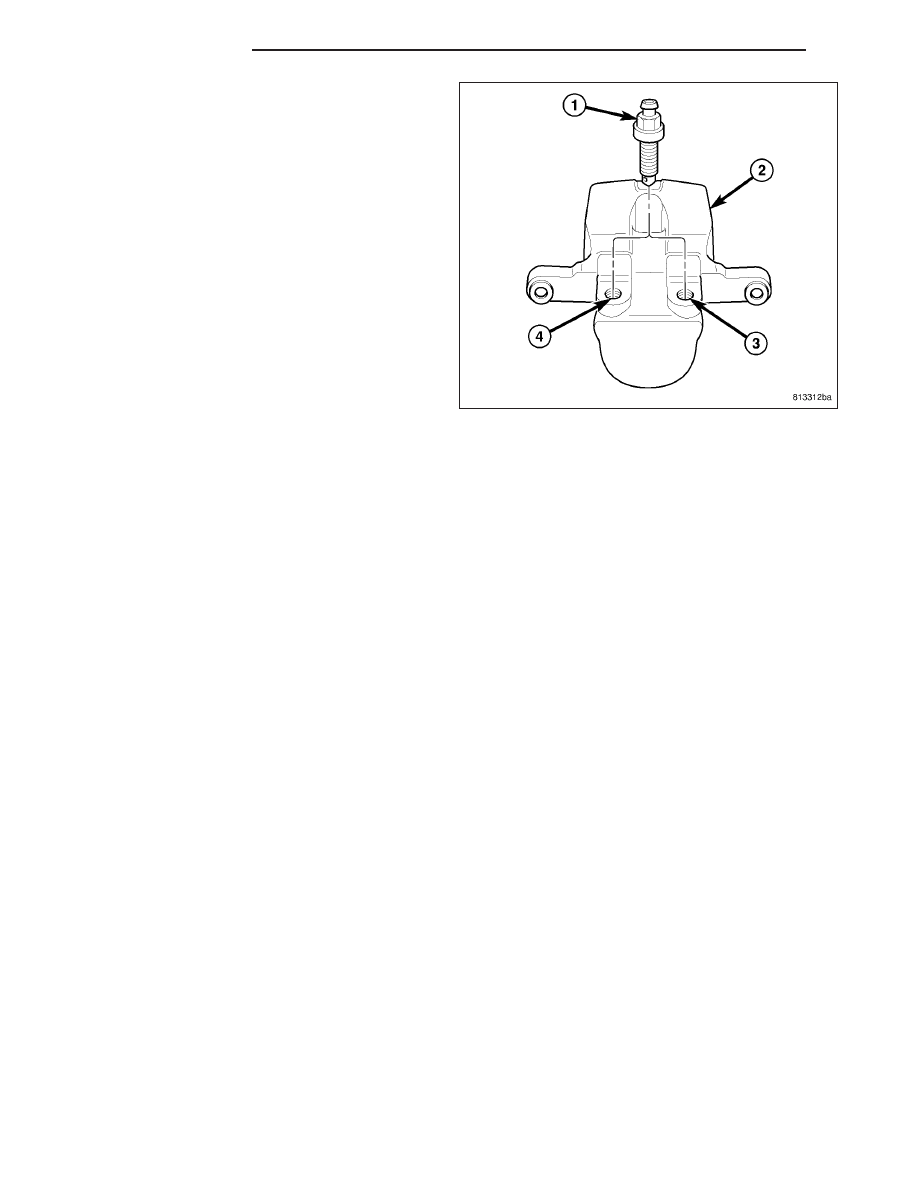Chrysler 300/300 Touring/300C, Dodge Magnum. Manual - part 149

8. Remove caliper bleeder screw (1) from caliper
housing (2).
9. Clean piston bore and drilled passage ways with
alcohol or a suitable solvent. Wipe it dry using only
a lint-free cloth.
10. Inspect both piston and bore for scoring or pitting.
NOTE: It is not recommended to hone caliper
bore.
The
anodized
coating
would
be
compromised.
CLEANING
WARNING: Dust and dirt accumulating on brake parts during normal use may contain asbestos fibers from
production or aftermarket brake linings. Breathing excessive concentrations of asbestos fibers can cause
serious bodily harm. Exercise care when servicing brake parts. Do not sand or grind brake lining unless
equipment used is designed to contain the dust residue. Do not clean brake parts with compressed air or
by dry brushing. Cleaning should be done by dampening the brake components with a fine mist of water,
then wiping the brake components clean with a dampened cloth. Dispose of cloth and all residue containing
asbestos fibers in an impermeable container with the appropriate label. Follow practices prescribed by the
Occupational Safety And Health Administration (OSHA) and the Environmental Protection Agency (EPA) for
the handling, processing, and disposing of dust or debris that may contain asbestos fibers.
To clean or flush the internal passages of the brake caliper, use fresh brake fluid or Mopar
T
Non-Chlorinated Brake
Parts Cleaner. Never use gasoline, kerosene, alcohol, oil, transmission fluid or any fluid containing mineral oil to
clean the caliper. These fluids will damage rubber cups and seals.
INSPECTION
Inspect the disc brake caliper for the following:
•
Cracked or damaged housing
•
Brake fluid leaks in and around boot area
•
Ruptures, brittleness or damage to the piston dust boot
If caliper fails inspection, disassemble and recondition caliper, replacing the seals and dust boots or replace caliper.
ASSEMBLY
CAUTION: Dirt, oil, and solvents can damage caliper seals. Ensure assembly area is clean and dry.
NOTE: Always use new, clean Mopar
T
DOT 3 Motor Vehicle Brake Fluid or equivalent when assembling
brake caliper.
NOTE: Never use used or old piston seals or boots for reassembly.
5 - 38
BRAKES - BASE
LX